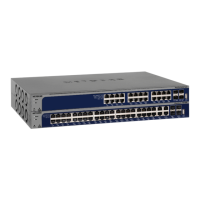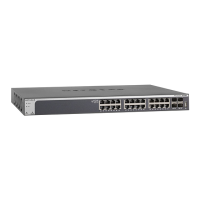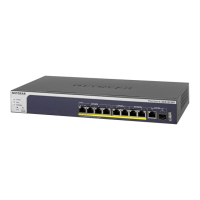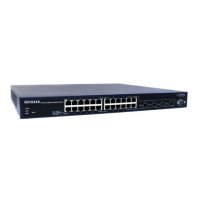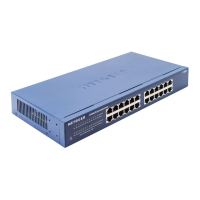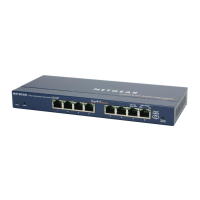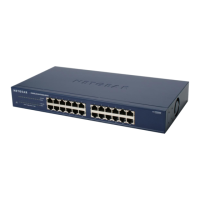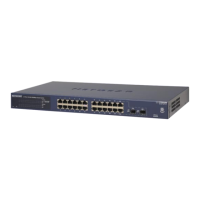Configure System Information
52
XS708T, XS712Tv2, and XS716T Smart Managed Pro Switch User Manual
The System Information page displays.
5. Select System > Management > Time > SNTP Server Configuration.
6. From the Server Type menu, select the type of SNTP address to enter in the address field.
The address can be either an IP address (IPv4, IPv6) or a host name (DNS). The default
value is IPv4.
7. In the Address field, specify the IP address or the host name of the SNTP server.
This is a text string of up to 64 characters, containing the encoded unicast IP address or
host name of an SNTP server. Unicast SNTP requests are sent to this address. If this
address is a DNS host name, then that host name is resolved into an IP address each
time an SNTP request is sent to it.
8. If the UDP port on the SNTP server to which SNTP requests are sent is not the standard
port (123), specify the port number in the Port field.
The valid range is 1 to 65535. The default value is 123.
9. In Priority field, specify the priority order which to query the servers.
The SNTP client on the device continues sending SNTP requests to different servers until
a successful response is received, or all servers are exhausted. The priority indicates the
order in which to query the servers. The request is sent to an SNTP server with a priority
value of 1 first, then to a server with a priority value of 2, and so on. If any servers are
assigned the same priority, the SNTP client contacts the servers in the order that they
appear in the table. The valid range is 1 to 3. The default value is 1.
10. In the Version field, specify the NTP version running on the server.
The range is 1 to 4. The default value is 4.
11. Click the Add button.
The SNTP server entry is added. This sends the updated configuration to the switch.
Configuration changes take effect immediately.
12. Repeat the previous steps to add additional SNTP servers.
You can configure up to three SNTP servers.

